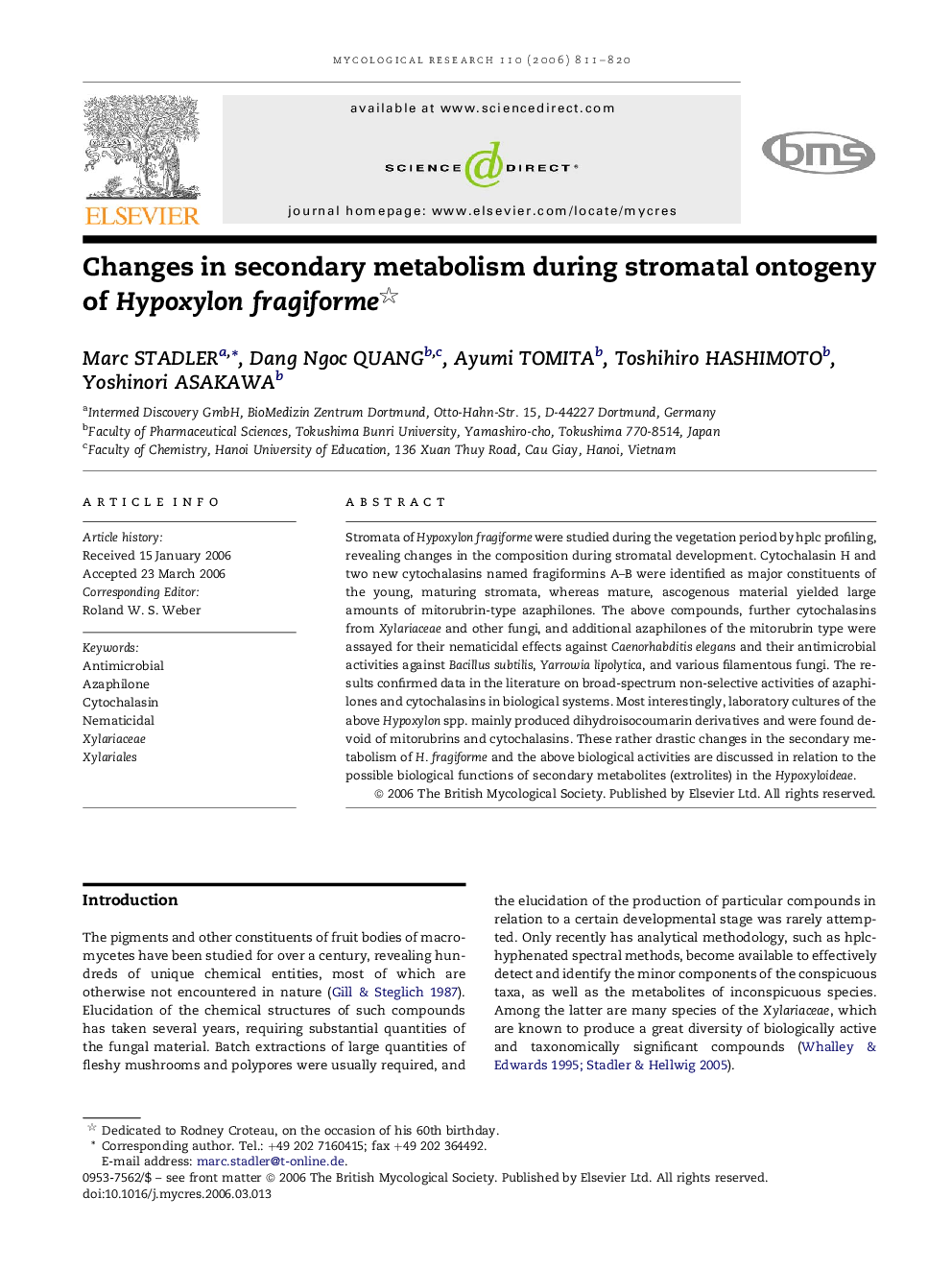| کد مقاله | کد نشریه | سال انتشار | مقاله انگلیسی | نسخه تمام متن |
|---|---|---|---|---|
| 4358163 | 1300129 | 2006 | 10 صفحه PDF | دانلود رایگان |

Stromata of Hypoxylon fragiforme were studied during the vegetation period by hplc profiling, revealing changes in the composition during stromatal development. Cytochalasin H and two new cytochalasins named fragiformins A–B were identified as major constituents of the young, maturing stromata, whereas mature, ascogenous material yielded large amounts of mitorubrin-type azaphilones. The above compounds, further cytochalasins from Xylariaceae and other fungi, and additional azaphilones of the mitorubrin type were assayed for their nematicidal effects against Caenorhabditis elegans and their antimicrobial activities against Bacillus subtilis, Yarrowia lipolytica, and various filamentous fungi. The results confirmed data in the literature on broad-spectrum non-selective activities of azaphilones and cytochalasins in biological systems. Most interestingly, laboratory cultures of the above Hypoxylon spp. mainly produced dihydroisocoumarin derivatives and were found devoid of mitorubrins and cytochalasins. These rather drastic changes in the secondary metabolism of H. fragiforme and the above biological activities are discussed in relation to the possible biological functions of secondary metabolites (extrolites) in the Hypoxyloideae.
Journal: Mycological Research - Volume 110, Issue 7, July 2006, Pages 811–820